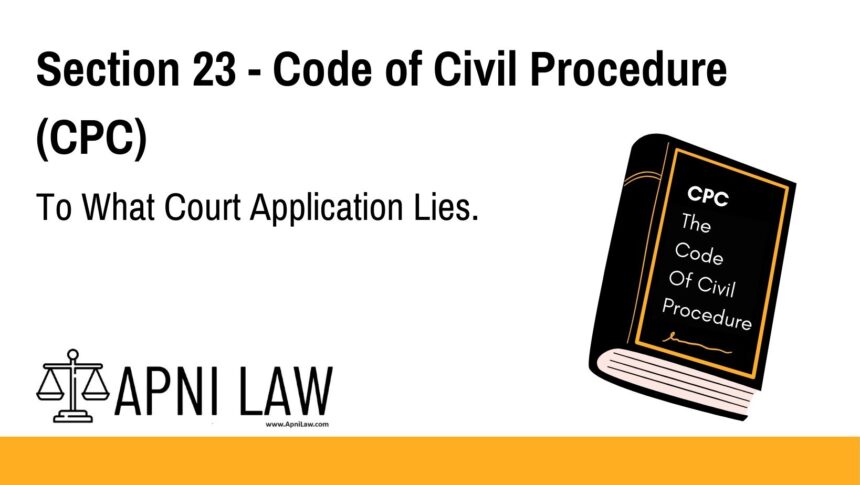CODE
(1) Where the several Courts having jurisdiction are subordinate to the same Appellate Court, an application under section 22 shall be made to the Appellate Court.
(2) Where such Courts are subordinate to different Appellate Courts but to the same High Court, the application shall be made to the said High Court.
(3) Where such Courts are subordinate to different High Courts, the application shall be made to the High Court within the local limits of whose jurisdiction the Court in which the suit is brought is situate.
EXPLANATION
Section 23 of the Code of Civil Procedure complements Section 22 by determining the appropriate forum where a transfer application is to be filed.
If a defendant wants to transfer a suit (filed in one of the multiple courts having jurisdiction) under Section 22, the application should be made:
- To the Appellate Court if both the original and proposed transferee courts are subordinate to the same Appellate Court.
- To the High Court if the two courts are under different Appellate Courts but the same High Court.
- To the respective High Court within whose local limits the original suit was instituted, in cases where the courts fall under different High Courts.
This section ensures clarity on the procedural route and judicial hierarchy when seeking transfer of suits across different jurisdictions.
ILLUSTRATION
Scenario 1:
A files a suit in Court X (a subordinate court under District Judge A). B wants the suit transferred to Court Y (also under District Judge A). Since both courts are under the same Appellate Court, the transfer application under Section 22 should be filed in that Appellate Court.
Scenario 2:
A suit is filed in Court M under District Judge M (under High Court Mumbai), and B wants it transferred to Court N under District Judge N (under High Court Delhi). Since the two courts fall under different High Courts, the application must be made to the High Court within whose jurisdiction the original court (Court M) lies – in this case, the Bombay High Court.
COMMON QUESTIONS ASKED
Q1. Why is Section 23 CPC important?
→ It lays down the correct appellate forum for transfer applications under Section 22, ensuring jurisdictional clarity.
Q2. What happens if the application is made to the wrong court?
→ The application is likely to be dismissed or returned. The proper court must be approached as per the hierarchy specified in Section 23.
Q3. Can a plaintiff file an application under Section 23?
→ No, the right to apply under Section 22 (and hence Section 23) lies with the defendant only. Plaintiffs may instead approach under Section 24 CPC.
Q4. What is meant by “Appellate Court” in this context?
→ The Appellate Court refers to the court that hears appeals from the subordinate courts (e.g., District Court or Sessions Court depending on the matter and hierarchy).
Q5. Is it mandatory to apply under Section 23 when courts fall under different jurisdictions?
→ Yes. The correct court must be approached as per the three-tiered distinction provided in Section 23 to maintain procedural propriety.








